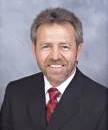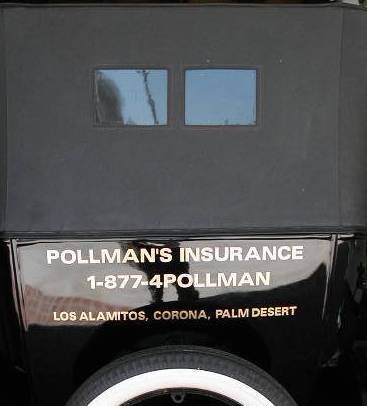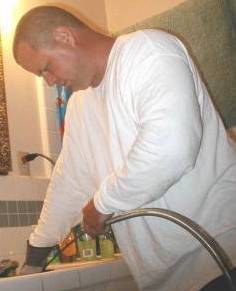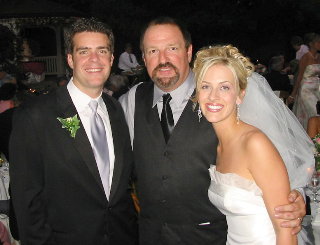The [LNG] industry's "40-year safety record" touted by applicants and government does not acknowledge that Europe's 11 terminals date from the 1970s through 2000 while Korea's 3 were built in 1986, 1999 and 2001 and half of Japan's 25 have opened since 1990; this is statistically insignificant gauged against projected growth...
Rapid growth is error inducing, but it is not the only error-inducing factor in play. Vessel and tank size, ancillary processing and production activities and "fail safe" devices (that lack a "40-year safety record") are transforming previously linear operations into complex systems that are increasingly opaque to their operators, while at-risk population surrounding industrial land is hugely increasing...
...Present and foreseeable increase in LNG tanker size and traffic may well be comparable to what the petroleum industry experienced with the advent of Very Large Crude Carriers and international petroleum trade growth: an industry that produced (and continues to produce) multiple, largely unrecognized small discharges and leaks that account for the majority of its pollution suddenly also produced catastrophic spills that it had not foreseen and for which its "safety plans" were wholly inadequate.
Regardless of how "robust" parts of LNG tankers (the hulls) are said to be or how safely they are operated, LNG tankers are part of the overall marine transportation industry that imposes enormous production pressures, exhibits high accident rates, is also rapidly increasing vessel size and traffic and is now beset by piracy and terrorism...
...[T]hese activities are not unique or uniquely safe. They are part of a petrochemical industry whose identical pipelines, transfer columns, heat exchangers, etc. routinely fail, and they will increasingly be tightly coupled with LNG import operations.
...FEDERAL AND INDEPENDENT EXPERT STUDIES DIFFER BUT DEMONSTRATE SERIOUS AND CREDIBLE RISKS THAT ARE NOT ADEQUATELY ADDRESSED BY EXISTING REGULATIONS
At least as early as the 1970s, the USCG, Bureau of Mines ("BOM"), Department of Transportation ("DOT") and others performed LNG spill studies; however, no regulations establishing marine exclusion zones to guard against marine spill pool fires and vapor cloud dispersion have been promulgated...
Testimony from recognized experts Dr. Jerry Havens and Dr. Harry West addressing cascading reactions and need for marine exclusion zones has been submitted by Massachusetts and Fall River MA (Dockets CP04-36 and CP04-41, 42 and 43, incorporated herein by reference), and the California Public Utilities Commission ("CPUC") has supplemented the record in this proceeding with testimony from Dr. Havens (Docket CP04-58, incorporated herein by reference) addressing the need for more protective land-based thermal radiation regulations. Testimony from security expert Richard A. Clarke concerning terrorist threats (LNG Facilities in Urban Areas; a Security Risk Management Analysis for Rhode Island) was submitted by Rhode Island (Docket CP04-223 and 293, incorporated herein by reference). These have not prompted regulatory change but have not been refuted
...STATE ENVIRONMENTAL REVIEWS, SITING STUDIES AND PLANS HAVE BEEN IGNORED.
While EP [Energy Policy] Act 05 gives the FERC exclusive permitting authority, we see neither Congressional intent to override NEPA's directive for coordinated review nor mandate to oppose state safety interests. Indeed, EP Act 05 creates a mechanism for states to express LNG safety concerns that we cannot believe was intended to deliberately diminish or override them. Nevertheless, the Project DEIS/DEIR may well be representative of others now underway to the degree that it ignores prior state policy, environmental studies and plans...
In her administrative petition seeking a joint hearing and rulemaking, Ms. Myown notes disputes that have arisen involving CA, other states and FERC. Testimony "from recognized experts Dr. Jerry Havens and Dr. Harry West submitted by Massachusetts and Fall River MA [citation omitted], from Richard A. Clarke submitted by Rhode Island [citations omitted] and from Dr. Havens submitted by the California Public Utilities Commission ("CPUC") in this proceeding [citation omitted] has raised serious safety and policy questions concerning the adequacy of existing regulations or lack of regulations," Mr. Myown writes.
Her filing notes that while the Coast Guard exercises regulatory authority over LNG facilities affecting safety and security in ports and navigable waterways and the Department of Transportation ("DOT") Pipeline and Hazardous Materials Safety Administration ("PHMSA") has authority over standards for transporting and storing LNG in interstate commerce, "Nothing in EP [Energy Policy] Act 05 suggests that project approval is a matter of right that must be conferred on applicants that comply with USSCG and PHMSA/OPS regulations, and nothing prevents FERC from setting higher standards, establishing policies regarding population limits or denying permits to facilities the FERC believes would be sited too closely to population."
She notes that the CA Public Utilities Commission and the CA Energy Commission have recommended to FERC that land-based thermal radiation standards used for calculating distances to which radiant heat from land-based LNG fires may extend off-premises should be changed from 5.0 to 1.5 Kw/m2/hour...and Fall River MA has petitioned USCG to promulgate thermal and vapor marine exclusion zones for marine spills of LNG similar to DOT's regulated zones for such spills on land and OPS for establishing minimum safety standards for locating new LNG pipeline facilities.
"[W]e acknowledge the roles of USCG and OPS/PHMSA but do not accept that the FERC cannot, at its discretion, establish policy or exercise higher standards when accepting, approving or denying applications," Ms. Myown writes, adding "we believe the National Environmental Policy Act [citation omitted] and the EP [Energy Policy] Act 05 give it [FERC] the duty and means to do so. For that reason, our accompanying petition requests programmatic NEPA review of the narrow environmental issue of human health impacts associated with LNG fires and explosions."
Her filing adds that because FERC, USCG and OPS/PHMSA are parties to a Memorandum of Understanding concerning their LNG permitting roles and work together in all phases of application and operations, we "also petition the FERC to initiate a Joint Hearing process to address Fall River's and California's unanswered concerns:
- Need for regulations establishing minimum safety standards for the location of new facilities in keeping with the PSA 79 objective of encouraging remote siting;
- Need for thermal and vapor marine exclusion zones for marine spills of LNG similar to DOT's regulated zones for such spills on land;
- Need to use the 1.5 Kw/m2/hour standard when calculating regulated zones for spills on land or water."
Her filing continues, "Additionally, the referenced expert testimony, prior Congressional reports and testimony and common sense persuade us that exclusion zones calculated on the basis of "design spills" might cascade to larger proportions, that the scope of what are currently thought to be "credible events" might increase in the future and that LNG fires might cascade to involve surrounding hazardous facilities and vice versa. We therefore request that any Joint Hearing should also address:
- Need to use total tanker cargo and/or total tank contents spills as the basis for calculating marine or land spill and vapor dispersion exclusion zones;
- Need to ensure that LNG terminals are not sited within hazard footprints of surrounding operations and vice versa;
- Need to maintain exclusion zones over project lifetimes (i.e., adopt protections against future expansion into surroundings or surrounding infill intrusions).
Her filing states that "Petitioners believe that the issues raised herein have been repeatedly addressed by Congress, numerous federal agencies and state and local jurisdictions, independent scientists and the public since 1969 but that their directives, policies, recommendations and data have been excluded from federal regulations. Petitioners further believe that failure to correct this omission at existing, recently permitted and currently pending urban LNG application sites could result in grave loss of life and economic harm."
...STATE CONCERNS ADDRESS NATIONAL, NOT PAROCHIAL, INTERESTS.
Reluctance to accept urban LNG terminals is often characterized as NIMBYism. Certainly few would readily embrace fire/explosion risks, and local populations are acutely aware of "parochial" concerns such as earthquakes and floods (that equally threaten LNG operations).
However, LNG importation is necessarily a coastal and river activity and many coastal and river city backyards already overflow with population density and interstate commerce. These are exactly what Congress made its first priority (NEPA Title I) as particularly the profound influences of population growth, high-density urbanization, industrial expansion, resource exploitation and new and expanding technological advances in establishing NEPA's policy of federal, state and local government and public and private cooperation to foster and promote the general welfare.
At the same time, activities that burden waterfront communities do serve national interests that LNG could imperil. While Congress was debating the EP Act 05, for example, Long Beach was lobbying Congress for Transportation Equity Act designation of Gerald Desmond Bridge expansion as a "project of national and regional significance" because of its huge economic goods movement contribution. It is 3/4 mile from the Project site and within risk of certain hazardous outcomes posited by the Sandia study...
...FAILURE TO CONDUCT PROGRAMMATIC NEPA REVIEW AND FORMULATE STANDARDS FOR LNG SITING IN POPULATED AREAS IS CONTRARY TO THE POLICY OBJECTIVES OF NEPA AND THE EP ACT 05 AND CONTRARY TO THE PUBLIC INTEREST.
Failure to systematically evaluate and adopt LNG siting standards as they relate to populated areas invites harming over-developed and over-industrialized areas, potentially carries growth-inducing impacts that might further harm them and postpones conservation and renewable energy investment, all of which are contrary to NEPA and/or the EP Act 05. It also wastes public resources evaluating applications that might simply be deemed inappropriate and not accepted if the FERC were to adopt the equivalent of a federal LNG land use plan to segregate LNG operations from population by adequate exclusion zones.
Failure to address these issues also exacerbates state-federal-local and government versus private agency, organization and individual conflicts, which is distinctly contrary to NEPA objectives. While the EP Act confers exclusive permitting jurisdiction and consolidates environmental review in a single federal record, it does not eliminate all states' roles; however, it offers little guidance on how state statutes apply to full disclosure, entitlement issues other than permitting and other causes that could invite litigation.
Most importantly, failure to address these issues invites public harm through LNG disaster and invites the equally grave catastrophe of public mistrust of democratic institutions
...CONCLUSION.
...[P]etitioners believe LNG importation in populated areas constitutes a new federal activity that begs programmatic NEPA review of the narrow question of human health impacts associated with LNG fires and explosions.
We acknowledge that other agencies may establish relevant regulations but do not accept that the FERC cannot, at its discretion, exercise higher standards. In the absence of new rulemakings, we believe NEPA and the EP Act 05 give the FERC the duty and mechanism to do so and respectfully petition toward that end.
Because the FERC asserted exclusive jurisdiction over and cited the Long Beach application as creating the necessity for legislative change, Petitioners believe the Project deserves the strictest review and merits the fullest attention as a benchmark that will set and reflect whatever siting and procedural standards the FERC intends to uphold.
LOCAL ISSUES
The Long Beach site is controversial. It is within the nation's most heavily trafficked port complex where ship size and throughput are rapidly increasing. It is surrounded by hazardous operations in close proximity to infrastructure that moves almost half of all national container cargo and is thus an attractive target whose economic loss could not be borne. It consists of 25 acres of landfill in an oil field supported by water injection to arrest subsidence and faulting. It is in a liquefaction zone close to seismic faults, in the path of local and remote tsunami and in a flood zone adjacent to a river. It is close to dense population.
The Long Beach Project is itself controversial. It would import from nations that have not previously served the U.S. LNG market and where local populations may oppose LNG exportation and/or be hostile to U.S. interests. It would import gas of uncertain quality and refine it on Project premises. It would trade in a complex and rapidly changing market, purchase on the emerging LNG spot market and supply a state subject to changing regulatory standards that has experienced energy price spikes that are the subject of litigation alleging market abuse.
NATIONAL ISSUES
LNG safety is controversial. The industry is portrayed as a mature enterprise with a 40-year safety record, but approximately half of that record has accumulated in the last decade; tanker, tank size and throughput are increasing and data is not statistically significant gauged against projected growth. Components include marine transportation, which has a significant loss record and is increasing vessel size, throughput and complexity and subject to increasing piracy and terrorism risks, and petrochemical production, where tank and pipeline failures, etc., are routine hazards.
The LNG application process is controversial. Intervenors that might have enjoyed evidentiary hearings with the right of cross examination, been entitled to compensation for witnesses' fees and sought state court redress have lost those privileges. Much data the public requires to review applications is not furnished as part of the FERC DEIS process, is proprietary or is redacted by the FERC as "Critical Energy Infrastructure Information" due to security reasons.
CONCLUSION
The history set forth herein and in our accompanying Petitions for Programmatic NEPA Review of LNG Siting in Populated Areas and for Joint Agency Hearing and Rulemakings demonstrate that serious and credible, decades-old questions regarding the lack of marine and adequate land-based exclusion zones to prevent pool fires and vapor cloud dispersion, failure to consider "worst-case" cascading disasters and allowance for human exposure to excessive thermal radiation all beg rulemakings of the appropriate agencies. It further demonstrates that risks to population are increasing due to rapid industry growth, new industry practices and the rapidly increasing number of siting applications and approvals.
For these reasons, we have submitted the attached Petition for Programmatic NEPA Review of LNG Siting in Populated Areas and Petition for Joint Agency Hearing and Rulemakings. We herein petition for Stay pending those actions and their outcome in order to avert what we believe poses a serious and credible threat to human life.









